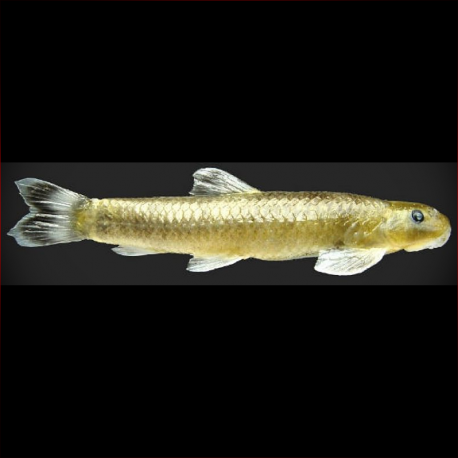More info
Datasheet
| Maximum Size | 6.5cm / 2.56inches |
General Description
Garra Nambulica, a species in the order Cypriniformes, is characterized by its moderate-sized body with a squarish head, mental disc, and specific scale counts. Belonging to the enigmatic genus Garra, taxonomic classification and species differentiation within the group remain subjects of ongoing revision and study. The presence of a distinctive W-shaped band on the caudal fin sets this species apart.
Aquarium Setup
The natural habitat of Garra Nambulica suggests an aquarium setup with a strong water flow, rocky or gravel substrate, and ample surface area for substrate feeding. Providing a variety of hiding spots and vegetation, along with maintaining water parameters within the species' preferred range, is crucial for their well-being (see table for specific requirements).
Behaviour
Typically, Garra Nambulica exhibits a behavior common to its genus, utilizing a modified lower lip to attach to surfaces in turbulent waters. This adaptation allows them to feed by scraping food items from the substrate using their keratinized mouthparts. Some species within the genus also show unique environmental adaptations, such as reduced eyes in cave-dwelling forms.
Feeding and Diet
As substrate feeders, Garra Nambulica primarily feed on algae, small invertebrates, and other organic material found in the aquarium substrate. Their specialized mouthparts help them scrape and consume food efficiently, making a varied diet of live, frozen, and high-quality dry foods essential for their optimal health.
Reproduction & Dimorphism
Details on the specific reproductive behaviors and dimorphic characteristics of Garra Nambulica are limited. However, like many Garra species, they likely exhibit typical cyprinid breeding behaviors, possibly involving the selection of spawning sites and the care of eggs and fry.
Habitat and Distribution
Garra Nambulica is known to inhabit tributary streams of the Nambul River within the Chindwin basin in Manipur state, northeastern India. The species' localized distribution underscores its ecological importance within this specific region and highlights the need for conservation efforts to protect its natural habitat.

